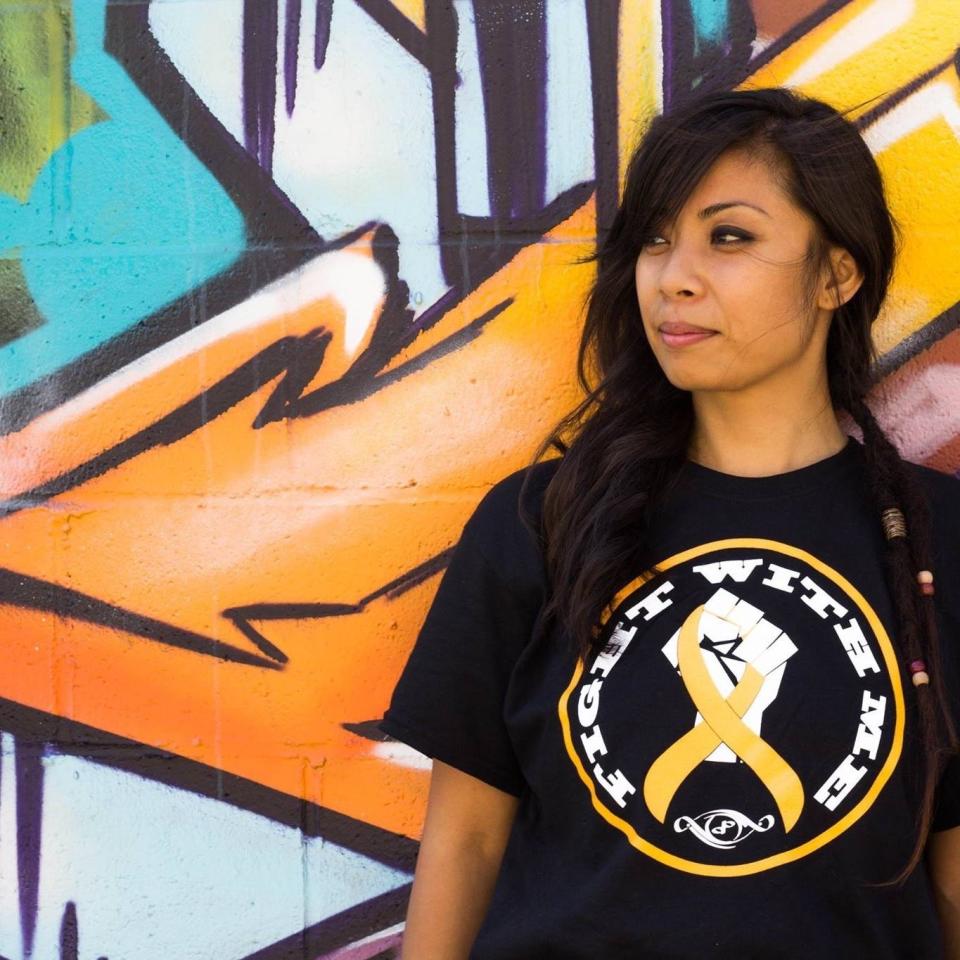On her wedding day, this bride could 'barely walk' — and she didn't know why

March is Multiple Sclerosis Awareness Month. Read more personal stories about people living with the autoimmune disease on Yahoo Lifestyle.
Many women imagine what it will be like walking down the aisle on their wedding day. For Sandy Diaz Haley, the actual experience wasn’t at all what she pictured: She could barely walk, and she didn’t know why.
Haley was 33 at the time. She had struggled with fatigue and numbness in her legs and feet before her destination wedding in Mexico. “I traveled internationally for work in my 20s and I was always fatigued,” she tells Yahoo Lifestyle. “My legs and feet would also always falls asleep, but I blamed it on traveling and wore compression socks.”
But when Haley started working with a personal trainer before her wedding, she developed some unusual symptoms. “I started having this weird numbness in my left hand, and my pinky and ring finger would become clawed,” she explains. Haley was diagnosed with having a pinched nerve in her forearm, which she attributed to the weight lifting she had been doing, and even ended up having surgery for it.

During post-surgical physical therapy, Haley says she started feeling numbness in her legs and feet “pretty severely.” Her therapist suggested it was sciatic pain, and she began seeing a chiropractor just before her wedding.
But on the day of her nuptials, Haley realized something was very wrong. “I could barely walk,” she says. “You keep making excuses for your health until you get to your wedding day and you can’t really walk or dance.”
Haley ended up having her mother on one side of her and her father on the other to help her get down the aisle. “I really kept it to myself,” she says. “I was so distracted by the wedding that I didn’t actually think through what was happening.” She ended up sleeping through most of her honeymoon.
Finally, a diagnosis.
When Haley got back home, she mentioned her symptoms to the doctor who operated on her hand. She also shared that she had been feeling a buzz in her spine when she looked down and her vision was distorted. Her doctor referred her to a neurologist who ordered an MRI — and she was finally diagnosed with multiple sclerosis.
“I was completely numb. I couldn’t understand it, and I had no idea what MS was,” she says.

Multiple sclerosis (MS) is a chronic and usually progressive autoimmune disease that damages the sheaths of the nerve cells in a person’s brain and spinal cord, according to the National Multiple Sclerosis Society. Symptoms of MS can vary, but they can include difficulty with balance, trouble walking and involuntary muscle spasms, along with fatigue, numbness and tingling, weakness, pain, cognitive changes and bladder and bowel issues.

Former dancer Diane Palaganas, who was diagnosed with MS when she was 29, says that she also sought the care of several specialists after she started experiencing leg tremors, a foot drop and hip pain. “It wasn’t until I went to my seventh physical therapist that I learned I might have MS,” Palaganas tells Yahoo Lifestyle. She was referred to a neurologist and was eventually diagnosed with the disease. “I was in shock. I thought my life was over,” she says. “I didn’t know a lot about MS, but the first thing on my mind was, ‘Am I going to be in a wheelchair?’”

For Kim Morales, the symptoms first started in her eye. “I would look to my right and my left eye would be looking straight,” she tells Yahoo Lifestyle. “After a few minutes, my left eye would slowly move to the right or whichever direction I was looking at.” Morales was an 18-year-old new mom at the time, and wrote off her symptoms to fatigue. But when she started having double vision, she saw an eye doctor, who ordered an MRI. She was diagnosed with MS a week later. “My heart literally dropped,” she recalls of her diagnosis. “I sat there with my daughter on my lap and I just hugged her. I had o idea what MS was or what would happen.”
It’s not uncommon for younger people to be diagnosed with MS.
MS is often thought of as a disease for older people, but most people who are diagnosed with MS are between the ages of 20 and 50, according to the National Multiple Sclerosis Society. “MS really is a disease of young people,” Barbara Giesser, M.D., a neurologist and MS specialist at Pacific Neuroscience Institute at Providence Saint John’s Health Center in Santa Monica, Calif., tells Yahoo Lifestyle.
Still, MS usually isn’t on the radar of most younger people.
What are the symptoms of MS in younger people?
They’re typically the same for people of any age, Amit Sachdev, M.D., director of the Division of Neuromuscular Medicine at Michigan State University, tells Yahoo Lifestyle. “MS has classic presentations [and] these presentations are the most likely way the disease will present in any group,” he says.
These are the most common symptoms of MS, according to the National MS Society:
Fatigue
Numbness or tingling
Walking difficulties
Spasticity
Weakness
Dizziness and vertigo
Vision problems
Sexual problems
Bladder and bowel problems
Pain and itching
Cognitive changes
Emotional changes
Depression
If you’re experiencing these symptoms as a younger person, it makes sense that you’d chalk it up to something else. “MS remains a rare disease,” says Sachdev.
Still, if you’re young and you’re having symptoms that persist or aren’t being fixed by treatment, Haley says it’s worth getting them checked out. “I ignored my symptoms for a long time and there was no reason to do that,” she says. “Everything is what you make of it. I have this thing and it sucks, but, overall, I’m OK.”
